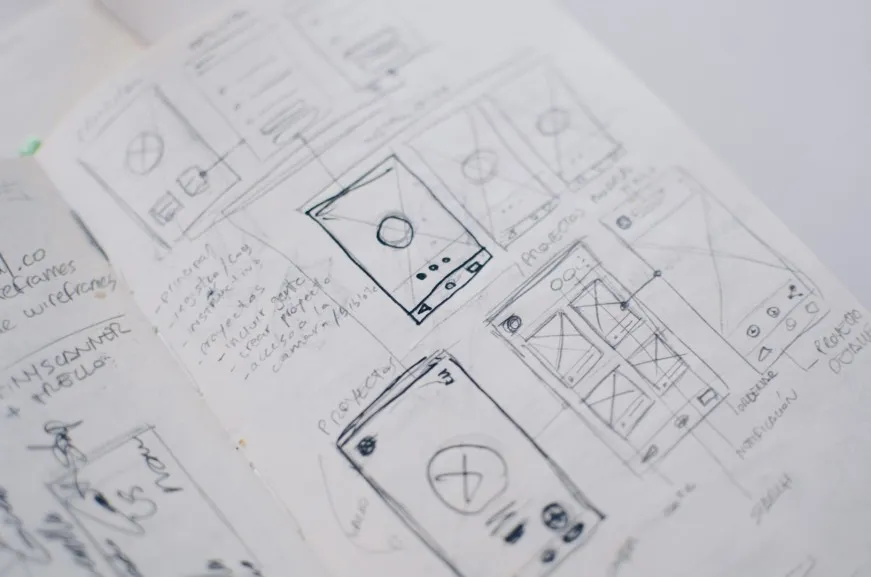
Why do you need software prototyping?
Prototyping in software development helps visualize solutions, ensures customer involvement, clarifies functionalities, and streamlines the development process, saving time and costs.
After hearing about prototyping most of us visualise examples such as NASA building a prototype of a new module of the International Space Station. Usually, we are not aware that prototyping is a widely used technique in a number of different industries and businesses, including software development. It is becoming an important part of IT contracts, which is good because prototyping has a number of important benefits.
A prototype is a working model of software with some limited options. It is used to evaluate and unify the vision of a software solution, its features and functionalities. Both the developer and customer benefit. By using a prototype, the customer can see how the product will look and have an opportunity to share ideas and give more specific instructions on both appearance and functionalities. On the other hand, the developer has an opportunity to change their vision and to estimate the time and resources that will be needed to complete such a project.
Why do you need a software prototype?
Most people, generally, want to get their software solution finished, free of all bugs and errors and ready to use as quickly as possible. To get exactly what is needed they have to participate in the process of creating a software solution and this may include prototyping. Thanks to prototypes it is easier to spot the gaps or missing minor features in the early stages of a development process. It is much cheaper and easier to make changes at the start as opposed to editing the finished product.
Same vision
Prototyping works better than just describing the vision or ideas because it helps to visualise and standardise them and answer important questions about functionalities. Unfortunately, there is no guarantee that the prototype code will be used in the final product but, even if it is not, it is a solid base for the future and could even be used as a separate solution in another project. Work on the prototype is never wasted. Even if the prototype does not work, there is always a lesson to learn from it.
Customer involvement
It is also important to introduce the product to the customer in the early stages of the development process because it is easier to make changes. Staying on the same page with the client is vital for a successful project. The product should fulfil the customers’ objectives and one of the roles of prototyping is to make sure that all the features and functionalities are what they should be.
Clarity of functionalities
At this stage of the development process, a list of functionalities should exist and be similar for both partners, even if their definitions may sometimes differ from one another. For example, a customer expects an advanced search function that uses different methods of searching for information and what they get is a simple search mechanism showing only the direct results. Problems that require defining the requirements and particular functionalities should be solved at this stage of prototyping. Both client and developer should be able to see the simplified version of a ready product of their future work.
Key stages of software prototyping
When you know what you can gain from prototyping you should also get to know what the stages of the prototyping process are:
1. Requirements gathering Building a prototype should always start with gathering data and requirements. It is one of the reasons for prototyping – to check if the functionalities and requirements of the clients meet the vision of the developers. That is why everything should be gathered and analysed deeply to be consistent in the first place. That is why everything should be gathered and analysed deeply to be consistent in the first place.
2. Creating the prototype With the help of tools and cutting-edge visualisations, developers create the functioning model of software that corresponds with the requirements and the consistent vision
3. Review and revise Once the prototype has been developed it is time to show it to the client, discuss the possible changes and accept the feedback. Together both partners, customer and developer, should discuss the possibilities and come to conclusions. To finalise this process the developer should make any revisions to the prototype based on gathered feedback and proceed to the next stages of the software development process with new, powerful knowledge.
The experimentation phase is vital for the IT project and it is more widely used nowadays. Prototyping becomes the core of early-stage collaboration between customer and developer, allowing them to save money and time in the future and dispelling any doubts before they become a serious problem. Ask your IT partner about prototyping software solutions to be sure that you will get exactly what your company needs.

Contact us.
If you need a partner in software development, we're here to help you.
We will respond to your enquiry immediately.